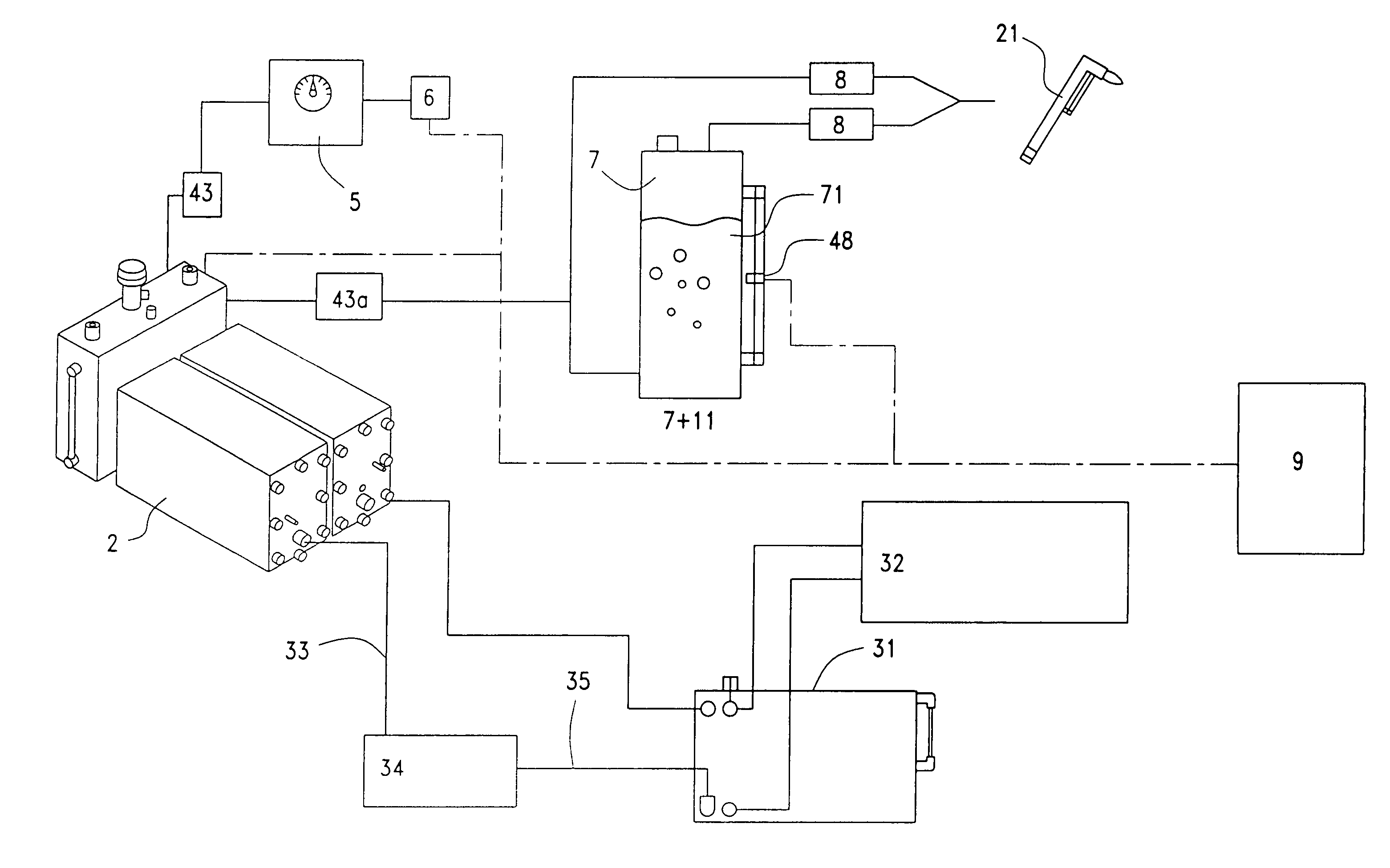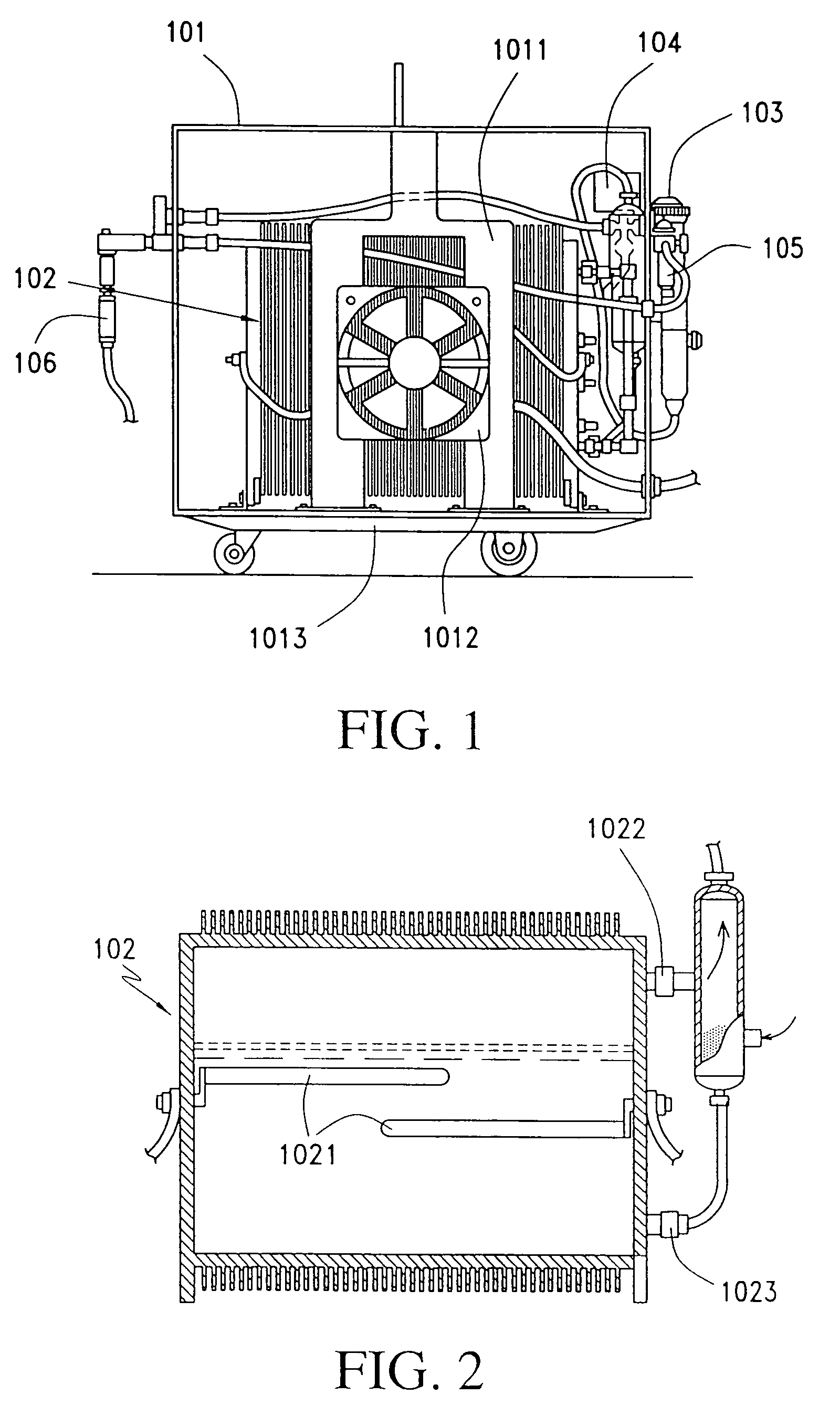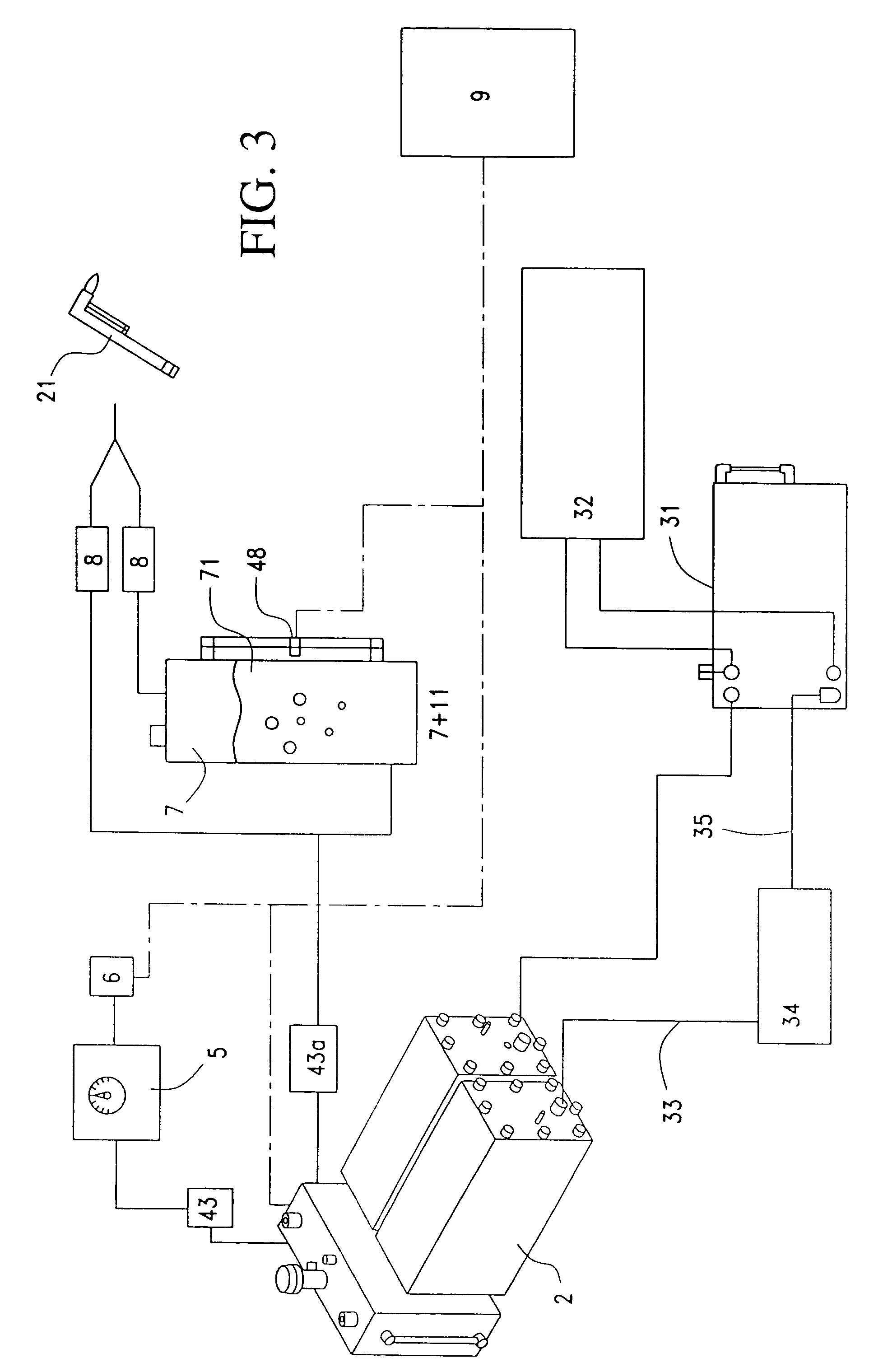Hydrogen/oxygen generating system with temperature control
a technology of hydrogen gas and generating system, which is applied in the direction of fuel cell details, climate sustainability, final product manufacture, etc., can solve the problems of gas production operation often stopping, system consumes large amounts of electricity, and unsatisfactory cooling process, so as to reduce the volume required for the electrolytic tank, increase the amount of hydrogen gas generated, and save electricity
- Summary
- Abstract
- Description
- Claims
- Application Information
AI Technical Summary
Benefits of technology
Problems solved by technology
Method used
Image
Examples
Embodiment Construction
[0070]The conventional mixed hydrogen-oxygen generator shown in FIGS. 1 and 2 includes a generator body framework (101) on which an electrolytic chamber (102) is built. On top of the body frame is a Π-shaped support frame (1011). Inside of the body framework is a cooling fan (1012).
[0071]Electrolytic chamber (102), a sealed hollow structure, is situated at the center of the foundation platform (1013). On both left and right internal sides and not extending inward are (+) (−) electrolytic rods (1021) in contact with electrolytic solution of suitable height. Gas outlet (1022) is situated at the upper part of the sidewall of the electrolytic chamber (102) whereas water inlet (1023) is situated at the lower part. The gas outlet of electrolytic chamber (102) is connected on the outside to a watertight backfire prevention system (103). This watertight backfire prevention system (103) is a hollow tube-like structure located on the outside of generator body frame (101).
[0072]A pressure regu...
PUM
| Property | Measurement | Unit |
|---|---|---|
| temperature | aaaaa | aaaaa |
| temperature | aaaaa | aaaaa |
| temperature | aaaaa | aaaaa |
Abstract
Description
Claims
Application Information
 Login to View More
Login to View More - R&D
- Intellectual Property
- Life Sciences
- Materials
- Tech Scout
- Unparalleled Data Quality
- Higher Quality Content
- 60% Fewer Hallucinations
Browse by: Latest US Patents, China's latest patents, Technical Efficacy Thesaurus, Application Domain, Technology Topic, Popular Technical Reports.
© 2025 PatSnap. All rights reserved.Legal|Privacy policy|Modern Slavery Act Transparency Statement|Sitemap|About US| Contact US: help@patsnap.com



